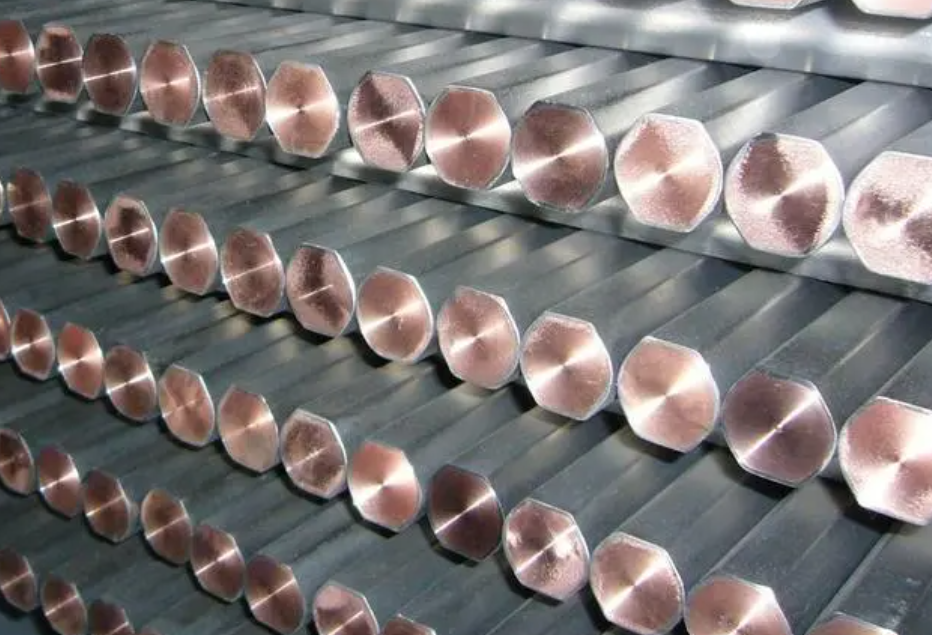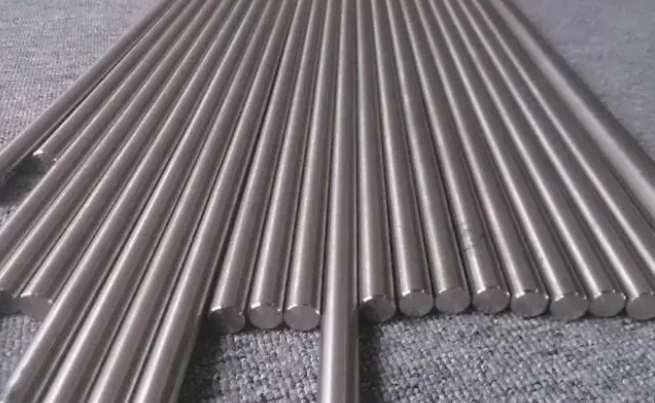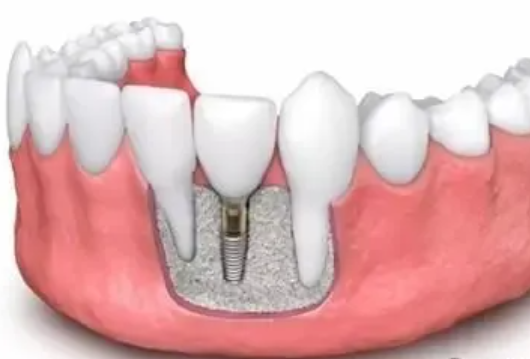High-temperature titanium alloys, also known as heat-resistant titanium alloys, are capable of long-term operation at elevated temperatures.
They exhibit high creep resistance and thermal stability, maintain good fatigue performance at both room and high temperatures, and possess good room-temperature ductility.
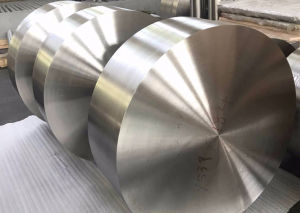
Titanium Alloys for Different Service Temperatures
In 1954, the United States developed the Ti-6Al-4V alloy, the first high-temperature paduan titanium, characterized by the α+β two-phase structure. This alloy can be used at temperatures between 300-350°C and has been applied in aerospace vehicles such as the Apollo spacecraft, Atlas missiles, and Ranger satellites. Namun, the Ti-6Al-4V alloy has some drawbacks, including insufficient heat resistance, suboptimal hardenability, poor cold workability, and complex preparation processes.
Near-α titanium alloys combine the excellent creep resistance of α-type alloys with the high strength of α+β-type alloys. By adding various alloying elements, several solution-strengthened high-temperature titanium alloys have been developed.
Elements such as Al, Sn, and Zr are added to increase the recrystallization temperature of titanium alloys, while elements like Mo, W, Nb, Fe, and Cr are added to enhance the high-temperature strength of titanium alloys. The high-temperature strength has been significantly improved through multiphase formation and the creation of compound phases, raising the maximum operating temperature from 350°C to 600°C. Table 1 lists typical titanium alloys for different service temperatures.
Table 1
| Temperature | Paduan Titanium |
|---|---|
| 350℃ | Ti-64, OT4, OT4-1, TC1, TC2, TCA |
| 400℃ | Ti-6246, IMI550, Ti-17, ET6, BT22, TC17, TC18 |
| 450℃ | IMI679, Ti 811, BT3-1, BT8M, TC6 |
| 500℃ | TMI685, T-6242, BT9, BT20, TA7?, TA15, TC11 |
| 550℃ | Ti-6242S, 1M418 29, BT25Y, TA12 |
| 600℃ | TMI834, Ti-1100, ET18Y, BT36, Ti60, Ti600B, Ti62421S |
| 650℃ | Ti-25Al-10Nb-3V1Mo, Ti65, TD3(Ti Al), RTi 6431S |
Dalam beberapa tahun terakhir, most of the 600°C high-temperature titanium alloys that have been put into use or are under development in various countries are derived from Ti-Al-Sn-Zr-Mo-Si system alloys. These are near-α type high-temperature titanium alloys. By adding elements such as Sn, Zr, Mo, and Si to titanium alloys, the solid solution strengthening effect of Al is fully utilized. Table 2 lists the nominal compositions and properties of typical high-temperature titanium alloys that can withstand temperatures of 600°C and above.
Table 2
| Alloy | Nominal Composition | Temperature (°C) |
|---|---|---|
| IMI834 | Ti-5.8Al-4Sn-3.3Zr-0.5Mo-0.7Nb-0.35Si-0.06C | 1045±10 |
| Ti-1100 | Ti-6Al-2.75Sn-4Zr-0.4Mo-0.45Si | 1015 |
| BT36 | Ti-6.2Al-2Sn-3.6Zr-0.7Mo-5W-0.1Y-0.15S | 1015±10 |
| Ti-600 | Ti-6Al-2.8Sn-4Zr-0.4Mo-0.45Si-0.1Y | 1010 |
| Ti-60 | Ti-5.6Al-4.8Sn-2Zr-1Mo-0.35Si-1Nd | 1025 |
| Ti-65 | Ti-6Al-4Sn-4Zr-0.5Mo-0.4Nb-2.5Ta-0.4Si-0.06C | 1050±15 |
| BT-62421S | Ti-6Al-2Sn-4Zr-2Nb-1Mo-0.2Si | 1005±5 |
| BTi-6431S | Ti-6.5Al-3Sn-3Zr-3Nb-3Mo-1W-0.2Si | – |
Properties of 600°C High-Temperature Titanium Alloys
It can be seen that high-temperature titanium alloys capable of withstanding 600°C contain a certain amount of strong α-stabilizing elements like Al, neutral elements such as Sn and Zr, and a small amount (<4%) of β-stabilizing elements. Al is the most important alloying element in high-temperature titanium alloys. Namun, to prevent the precipitation of the Ti3Al(α2) phase that can embrittle the alloy, the aluminum equivalent is usually controlled below 8%.
The addition of Sn and Zr can improve the creep resistance of Ti-Al system alloys without significantly reducing their ductility. A small amount of β-stabilizing elements can slow down the formation of the α phase and also improve the alloy’s process plasticity. Among them, Mo is the most commonly used β-stabilizing element in high-temperature titanium alloys. The addition of a small amount of Mo (<1%) provides the alloy with good high-temperature creep performance and thermal stability. Mo can also strengthen the β phase in high-temperature titanium alloys. Si is one of the important elements to improve the thermal strength of titanium alloys. High-temperature titanium alloys usually contain 0.1%~0.5% Si, which can significantly improve the high-temperature creep resistance of the alloys.
IMI834 Alloy
The IMI834 alloy, developed in the UK based on the composition of the IMI685 alloy, contains 0.5% Mo and 0.7% Nb. These additions maximize the strength of the alloy without compromising its thermal stability. The addition of 0.06% C expands the processing window of the two-phase region, optimizes the microstructure, and effectively controls the content of the primary α phase. By controlling the content and size of the primary α phase, silicide particles, and ordered α phase through appropriate heat treatment regimes, the IMI834 alloy exhibits good room temperature strength, high creep strength, good fatigue strength, and welding performance. The IMI834 alloy has been applied in various engines, such as the high-pressure compressor wheels, drums, and rear shafts of the Trent700 engine on the B777 aircraft, the high-pressure compressor rotor of the EJ200 engine, and the PW350 engine of Pratt & Whitney.
Ti-1100 Alloy
The Ti-1100 alloy, developed in the United States based on the composition of the Ti-6242S alloy, adjusts the content of Al, Sn, Mo, and Si elements. It requires the O mass fraction to be less than 0.07% and the Fe mass fraction to be less than 0.02%. The reduction of impurity element content is beneficial for the creep resistance and thermal stability of the alloy. The Ti-1100 alloy has been applied in the thermal protection system of the American Space Shuttle, the large-area thermal protection system on the leeward side of the X-33 single-stage-to-orbit rocket vehicle, and the high-pressure compressor wheels and low-pressure turbine blades of the T55-712 modified engine.
BT25Y Alloy
Developed in Russia based on the BT25 alloy, the BT25Y (Ti-6.5Al-1.8Sn-3.8Zr-4Mo-1W-0.18Si) alloy has a β-transformation temperature of (970±15)°C and can be used for long periods at 450, Russia recommends using the BT18Y (Ti-6.5Al-2.5Sn-4Zr-0.7Mo-1Nb-0.25Si) alloy. The newly developed BT36 alloy contains 5% W and 0.1% Y, with W-containing alloys exhibiting better thermal stability and thermal strength compared to Cr-containing alloys, allowing for long-term use at 600°C.
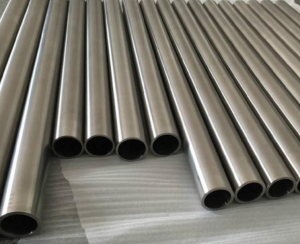
Ti-60 and Ti-600 Alloys
China has developed the Ti-60 and Ti-600 alloys, which contain rare earth elements and are high-temperature titanium alloys for 600°C applications. The former contains 1% Nd, while the latter contains 0.1% Y. The addition of trace rare earth elements can refine the grain structure, significantly improving the alloy’s plasticity and thermal stability. In the Ti-60 alloy, the contents of Al, Si, and Sn alloy elements are higher than those in the Ti-55 alloy, further enhancing the alloy’s thermal strength.
The addition of 1% Nd refines the microstructure and improves oxidation resistance, resulting in an optimal match of thermal strength and thermal stability at 600°C. The Ti-600 alloy developed in China has reached an industrial scale, with room temperature and high-temperature mechanical properties comparable to those of other 600°C high-temperature titanium alloys (IMI834, Ti-1100, BT36) worldwide. Its creep performance advantage is significant, with a residual deformation of only 0.06%~0.10% after 100 hours at 600°C and 150 MPa stress.
Ti65 Alloy
The Ti65 alloy, developed in China, is a highly alloyed high-temperature titanium alloy with a total alloying element content approaching 18%. By forging in the α+β two-phase region at a lower temperature and solution treating in the α+β two-phase region at a higher temperature, a bimodal microstructure is obtained, with a small amount of spherical primary α phase (5%~25%) on the matrix of the β-transformation structure. This provides the best match of thermal stability, creep resistance, and fatigue performance, allowing for long-term use at temperatures up to 650°C. The maximum quenchable cross-sectional thickness can reach 80mm, and the alloy exhibits good forgeability, weldability, and oxidation resistance.
